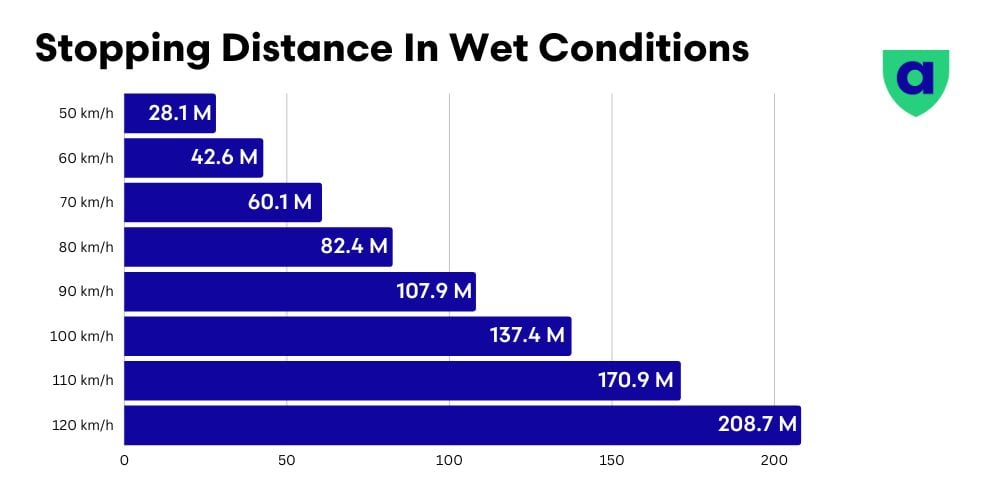When it comes to driving, safety should always be the top priority. After a heavy storm, it's common to have wet roads and even debris. This can make the road slick, lead to hydroplaning, or create barriers/obstacles on the road. In order to navigate the roads safely, we have put a few helpful tips and tricks together.
What is Hydroplaning?
Hydroplaning occurs when your vehicle's tires lose contact with the road due to a layer of water between the tire and the road surface. This can lead to a loss of control, making it a hazardous situation.
4 Tips for Driving in the Rain
-
Slow Down: Reduce your speed when it's raining, especially during heavy downpours. Slower speeds allow your tires to maintain better contact with the road.
-
Proper Tire Inflation: Keep your tires properly inflated. Overinflated tires reduce traction, making hydroplaning more likely. Check your owners manual or the label inside the drivers door jamb to get the proper inflation.
-
Avoid Puddles or Standing Water: Steer clear of large puddles and standing water, as these areas are more prone to causing hydroplaning. Driving through deep puddles could also create the risk of water getting into your electronics or engine components.
-
Smooth Movements: Make gentle steering, braking, and acceleration movements to avoid sudden shifts in weight that could lead to loss of traction. Slow and steady wins, especially when their is no race.

What is Debris on the Road?
Debris can consist of any materials that aren't intended to be on the road. This can include: leaves, gravel, or fallen objects (which can create unexpected hazards). While it's always important to be vigilant on the road, it's even more important after a storm. Below is a photo of the parking lot of our Edmonton office after a strong storm. Fallen Leaves covered the entire road.
Organic debris, like leaves or even grass clippings, can make roadways incredibly slippery. Stay alert while on the roads and be aware of the potential hazards.

4 Tips for Navigating Debris on the Road
-
Stay Alert: Keep your eyes on the road ahead and scan for any debris or obstacles. A vigilant approach gives you more time to react.
-
Maintain a Safe Following Distance: Following too closely could leave you without enough time for an emergency stop or evasive maneuver. Following 2-seconds behind another vehicle should be the minimum distance.
-
Steady Braking: If you encounter debris, apply the brakes gently and steadily. Sudden or aggressive braking can lead to skidding.
-
Steer Smoothly: If you need to swerve to avoid debris, make gradual and controlled steering movements. Sudden jerks can cause your vehicle to lose stability. Continue to steer towards the direction you want to go, even in a skid.
Conclusion
Driving on wet roads and debris-covered surfaces requires careful attention and a few simple strategies to ensure your safety and the safety of others on the road. By following these easy tips and tricks, you'll be better equipped to handle challenging driving conditions and arrive at your destination without incident. Remember, a little extra caution goes a long way when it comes to safe driving.






